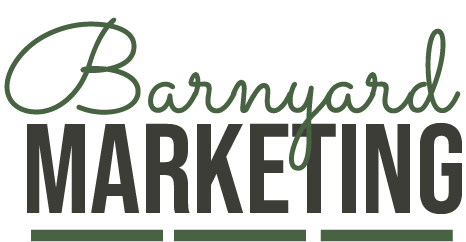Good marketing is not about being fancy or complicated. At its heart, marketing is simply telling people who you are, what you offer, and how you can help them. When done well, your ads, flyers, brochures, or business cards become quiet but hardworking salespeople. They speak on your behalf—even when you are busy in the shop or at home.
Here are seven elements every piece of marketing should have if you want it to be clear, professional, and effective.
1. A Clear Purpose
Before you create any marketing material, ask yourself: What do I want this to do?
Do you want more phone calls? Are you hoping people will visit your stand at the market? Maybe you want to remind current customers to place their seasonal orders. Each piece of marketing should have one main goal. When the purpose is clear, the design and wording will fall into place more naturally.
2. An Easy-to-Read Headline
Your headline is the very first thing people see. If it’s unclear or uninteresting, they may not read further. A strong headline should be short, simple, and to the point:
- “Fresh Baked Goods Daily”
- “Quality Roofing Before Winter”
- “Call for Firewood Delivery”
You don’t need clever wording—clarity always works better than confusion.
3. Quality Images or Clean Design
Pictures draw the eye and quickly explain what words sometimes can’t. A photo of a finished project, fresh produce, or a smiling customer can build trust faster than a paragraph of text. If photos aren’t available, neat and uncluttered design is just as important. White space, tidy borders, and easy-to-read lettering all show that you care about your business.
4. Useful Information
One of the most common mistakes in marketing is forgetting the basics. Always include:
- What you sell or provide
- Your hours or season of operation
- Where you are located
- How to contact you
If someone sees your ad but doesn’t know how to reach you, your effort is wasted. Think of what your customer needs to know, and make sure it’s included.
5. A Call to Action
Don’t just tell people about your business—invite them to respond. Phrases like:
“Call today to schedule”
“Visit one of our dealers”
“Order before October 31 for a discount”
These simple prompts make it clear what you want people to do. A call to action turns attention into action.
6. Consistent Branding
Even small businesses benefit from consistency. Use the same business name, colors, or logo across all of your materials. When people see the same look and wording over time, they begin to recognize and trust your brand. This consistency makes you memorable.
Consider creating a brand guide sheet: A simple, one-pager that lists your logo, fonts, colors and key messages. Then, you can hand this sheet to any designer and hopefully your brand will stay consistent.
7. Proof of Trust
Customers are more likely to respond when they know others have had a positive experience with your business. This could be:
- A short testimonial from a satisfied customer
- A note about how long you’ve been in business
- Awards, certifications, or community recognition
Including proof of trust reassures people that they are choosing a reliable, reputable business—and encourages them to take the next step.
When all seven of these elements work together, your marketing materials will be clear, professional, and effective. They will reflect the care you put into your business and make it easy for customers to connect with you.
At Barnyard Marketing, we help businesses of all sizes create marketing that works. Whether you need a simple ad for the local paper, a brochure for your shop, or a flyer for a seasonal sale, we can guide you through the process and design materials that do the job right.
Because at the end of the day, good marketing is about being clear, trustworthy, and consistent—so your customers know exactly how you can serve them.
Need help with graphic design? Contact Barnyard Marketing to start a project.

